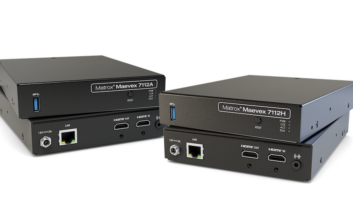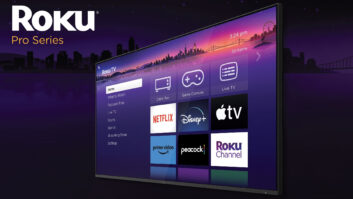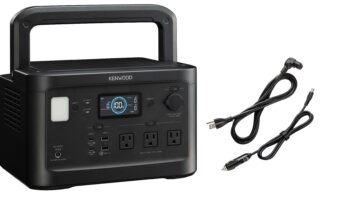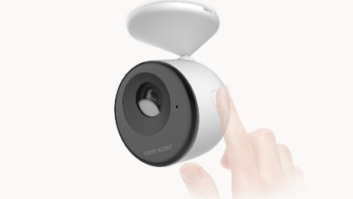Montebello,
Calif. – Teac is preparing to ship its first Distinction series of home audio
components, positioning the series above its Reference series but below the
separately marketed top-end Esoteric series.
Teac
America is also planning three new Esoteric components and has begun shipping
three Reference components.
In the
Distinction series, the company plans late-March/early-April shipments of three
two-channel CD/SACD players priced from a suggested $799 to $1,999, three
integrated amps priced from a suggested $999 to $2,999, and an AM/FM tuner,
whose pricing was unavailable. The integrated-amp prices fall between a Reference
integrated amp at $649 and Esoteric integrated amps that start at around
$10,000-$12,000. Esoteric CD/SACD players start at around $6,000. The Reference
series has no CD/SACD players.
Distinction’s
integrated amps, all 17-inches-wide, feature phono preamps, sculpted
brushed-aluminum front panels, and choice of black or silver chassis. The
lineup starts with the $999-suggested AI-1000, rated at 2×85 watts in 8 ohms and
2×120 watts into 4 ohms, features subwoofer preout, headphone output, home
theater bypass, and six RCA inputs. The $1,499 AI-2000, rated at 2×125 watts
into 8 ohms and 2×180 watts into 4 ohms, is taller and adds balanced and
unbalanced inputs and AB speaker switch. It features five RCA inputs and one
balanced XLR input. The $2,999 is rated at 2×200 watts into 8 ohms and 2×300
watts into 4 ohms, adds a second balanced XLR input, but lacks headphone output.
The
Distinction CD/SACD players, available in silver or black, start with the $799
CD-1000. USB inputs to connect to a PC are added to the $1,199 CD-2000 and
$1,999 CD-3000.
The
CD-1000 features 24-bit/192kHz DACs, more than 100dB of dynamic range, more
than 110dB signal-to-noise ratio, one RCA output, one coaxial output, and no
inputs. The CD-2000 offers the same specs and adds a USB input and one balanced
XLR audio output. The top CD-3000 increases dynamic range to more than 120dB.
It features dual 192kHz/24-bit DACs, features 192kHz up conversion, adds a
coaxial input to join a USB input, and offers the same three outputs as the
2000.
In the Esoteric
series, Teac plans June shipments of its latest entry-level CD/SACD player, the
$5,900 K-07. It replaces the SA-50 and adds 32-bit dual-mono DACs, an improved
clock, and improved USB input when used as a PC’s DACs. The USB input supports 192kHz/24-bit
jitter-free asynchronous transmission compared to the predecessor’s
96kHz/24-bit synchronous USB transmission. The K-07 also features 2 to 4 times
sampling-rate up conversion of PCM, PCM-to-DSD (Direct Stream Digital SACD
format) conversion, one RCA and one balanced analog XLR output, and RCA analog
and digital optical input.
At
$8,300, the step-up K-05 CD/SACD player adds VRDS (vibration-free rigid disc
clamping system) compared to the K-07. Compared to its X-05 predecessor, the
K-05 features 32-bit dual-mono DACs compared to 24 bits, and it adds a USB input
for PC streaming. The USB input accepts asynchronous 192kHz/24-bit streams.
Other
K-05 features include ability to connect to the external Direct Master Clock
Link master clock generator with up to 10MHz clocking capability to deliver
more precise, focused imaging. The K-05, shipping in May, also features one
optical digital and one RCA analog input. Outputs consist of one RCA, one
balanced analog XLR, and one optical digital output.
Two
other CD/SACD players in the Esoteric line are the $13,000 K-03 and $23,000
K-01.
In the
Reference series, Teac recently began shipping the $649-suggested A-H01 amp and
the $399-suggested DS-H01 iPod/iPhone/iPad docking/charging cradle, which
features built-in 192kHz/24-bit DAC and USB port for iTunes syncing. Also new
is the $549 UD-H01 USB DAC, which is the first DAC in the series with dual-mono
design. The 32-bit/192kHz DAC features headphone amp and asynchronous 192kHz
sampling rate for its USB input.













